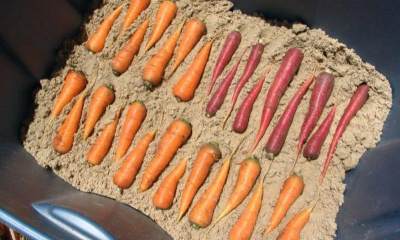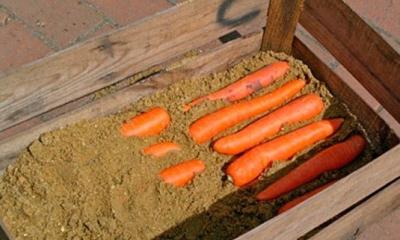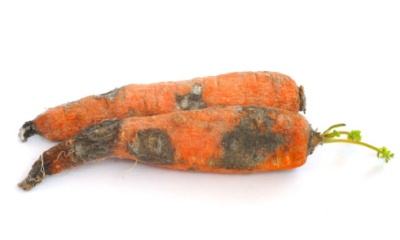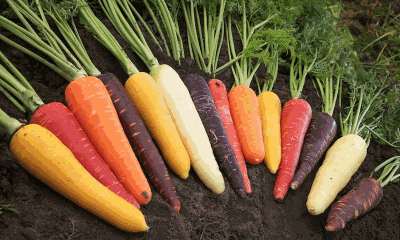Pros, cons and conditions for winter storage of carrots in the sand
 You always want to keep a rich harvest of carrots as long as possible. One possible option is sand storage.
You always want to keep a rich harvest of carrots as long as possible. One possible option is sand storage.
In order for the roots to stay in excellent condition until summer, it is necessary to properly prepare them for laying, and also observe the storage conditions.
Practical advice and nuances that novice gardeners do not always know about will help to avoid failures.
In this article we will tell you whether it is possible and how to properly store carrots for the winter in the sand, how it should be - dry or wet, what requirements should be met by the storage conditions of the root crop.
Content
Can you store it like that?
The question of whether the sand is suitable for planting carrots for the winter is of interest to everyone who has never tried this technology in practice. Experts and amateur gardeners give an unequivocal positive answer.
Advantages and disadvantages of the method
There are various alternative ways to save:
- in plastic bags,
- clay talker,
- peat,
- coniferous sawdust.
The sand method has its merits in comparison with them. That is why it remains one of the most sought after among gardeners.
The advantages are:
 A stable temperature is maintained throughout the entire period.
A stable temperature is maintained throughout the entire period.- The carrots receive the necessary moisture and do not lose their firmness.
- Free gas exchange between vegetables and air takes place through the sand.
- The possibility of penetration of the fungus inside the filler is excluded.
- Sand is an affordable and inexpensive material that can be recycled.
The "sandy" storage method has fewer drawbacks. They are mainly related to the complexity of the process.
Firstly, carrots should not be stacked in bulk, but in neat layers. This painstaking work takes patience and time. Secondly, getting vegetables in winter, you have to peel them.
Thirdly, it is necessary to accurately calculate the moisture content of the sand... The last point is very important, since when it is violated, the roots either wither or rot.
Preparation for the process
The harvested crop, as well as the filler itself, requires preliminary processing.This directly affects the storage duration. Proper preparation consists of several activities.
Drying, washing, hardening of root crops
The above-ground part of the harvested carrot is cut off, leaving a tail no more than 2 cm long... The tops are cut as quickly as possible after harvesting - in the first two hours, otherwise the green phytomass draws moisture from the root.
You can pick off weak tops with your hands. Stronger rods are easier to cut with a knife or scissors.
On rainy days, drying is carried out under a canopy or indoors. After that, the carrots are calibrated by selecting large specimens undamaged with a shovel and pests. Specimens with a green top are also removed for processing.
 In parallel, the remnants of the earth are cleaned from the surface of the root crops... This is done with a brush or rag. It is highly undesirable to use sharp objects (knife, spatula), as they can damage the delicate skin.
In parallel, the remnants of the earth are cleaned from the surface of the root crops... This is done with a brush or rag. It is highly undesirable to use sharp objects (knife, spatula), as they can damage the delicate skin.
Cuts, breaks, damage to root crops are the "open gate" for fungal infection.
Two days before laying in the sand, the roots must be cooled... The temperature can be lowered gradually or abruptly - this moment does not affect the degree of hardening. The required figure is zero degrees.
Most experts are inclined to believe that washing carrots before laying them in the sand is impractical.
Dry or wet filler?
A loamy substrate is suitable for storing plant products. It is not recommended to use sea sand due to the increased amount of salt.
In the latter case, the sand must be dried to an optimum moisture content. If the filler has already been used in the previous year, you can also refill root crops with it.
Carrots require humidity from 90 to 96%... If this figure falls, then the vegetables wither. It should be borne in mind that during storage, the root crops themselves release a certain amount of moisture during respiration.
 It needs to be replenished. That is why the sand should always be slightly damp. Under normal conditions, one ton of carrots evaporates up to 16 grams of moisture.
It needs to be replenished. That is why the sand should always be slightly damp. Under normal conditions, one ton of carrots evaporates up to 16 grams of moisture.
The optimal filler is a moistened sand mixture that maintains friability... To achieve this state, the sand is moistened at the rate of 1 liter of water per 10 kg.
This is enough if the temperature in the vegetable store is maintained from 0 to +3 degrees and humidity is 95%.
If the conditions are drier, the sand is moistened more. In a very humid environment, it is recommended to use dry filler.
Which container to choose?
Suitable for long-term preservation:
- wooden boxes,
- metal buckets,
- plastic containers.
The containers are washed and disinfected using lime or copper sulfate. If the container has already been used for storing vegetables and there are traces of fungus on it, disinfection is required.
How to properly store a vegetable for the winter?
The required amount of sand depends on the amount of the crop. On average, 1 kg of carrots requires 0.5 m3 of fine-grained filler.
The procedure for laying orange root crops consists of several steps:
 Prepared sand is poured into containers by about 2-3 cm.
Prepared sand is poured into containers by about 2-3 cm.- Root crops are laid out horizontally or vertically in one layer.
- Pour the sand, completely covering the carrots.
- Repeat alternating layers until the container is full.
- The last layer is sand.
To enhance the protection of the crop from mold, the sand is mixed with a small amount of chalk powder or ash (2% of the total is sufficient).
Timing
Since the sand creates optimal conditions for keeping carrots, they can be stored for a long time. By maintaining the correct humidity and temperature in the storage, the roots remain fresh until the end of summer. This period is significantly reduced if the sand is waterlogged.
In these cases, vegetables are not stored longer than 3-4 months.
Possible problems and how to solve them
To exclude problem situations, it is necessary to monitor abiotic factors during the entire storage period: temperature and humidity.
For convenience, it is advisable to put a thermometer and a barometer in the storage... An indication of a change in conditions may be the carrot itself, which is dug out of the sand.
The appearance of problems can be judged if:
 Carrot wilted... This means that the sand is dry. So that the roots do not lose their elasticity, it is necessary to slightly moisten the filler and increase the humidity in the room.
Carrot wilted... This means that the sand is dry. So that the roots do not lose their elasticity, it is necessary to slightly moisten the filler and increase the humidity in the room.- Vegetables rot... The fungus develops if the substrate is too wet. To solve the problem, it is necessary to reduce the humidity in the room by placing containers with an adsorbent (for example, with salt or coal) and improve ventilation.
- Root crops sprout... Growth begins in warm conditions. To stop the process, you need to lower the temperature to the required level. Airing with cold air admission can help.
In some cases, it is possible to lose crop reserves due to rodents. This problem is solved with the help of traps or the use of poison.
Tips and bans
In order to maintain product quality throughout the entire shelf life, it is important not only to create optimal storage conditions, but also to choose the right carrot varieties. Not all varieties are intended for winter laying in the sand.
Practice shows that the best choice is mid-season and mid-late varieties. It is they who manage to fully mature in a temperate climate and at the same time accumulate the maximum amount of nutrients.
Examples of good choices include the following varietal varieties:
 Gribovchanin F1;
Gribovchanin F1;- Canada F1;
- Nayarit;
- Autumn Queen;
- Nantejska;
- Nantes 4;
- Perfect;
- Incomparable;
- Nevis F1;
- Shantane;
- Rosal;
- Samson;
- Typhoon;
- Moscow winter.
A guideline for selection can be the shape of the root: an elongated conical is more preferable than a shortened one.
Attention should be paid to the sizing and selection of root crops... Mature, dense specimens are suitable for storage. The more tender and juicy a vegetable is, the less it will lie in the sand. Conversely, the rougher the texture of the carrot, the longer it will last.
There are several important precautions to consider when picking, handling, storing, and storing carrots.
The most important ones are:
 You cannot harvest the vegetable in cloudy rainy weather.
You cannot harvest the vegetable in cloudy rainy weather.- It is not recommended to wash root vegetables before placing them in the sand.
- Carrots are not sun dried or heated prior to storage.
- Vegetables are not sprinkled with raw, non-disinfected sand.
- When filling or removing carrots, you must not leave them on the surface without sand.
Related Videos
The video will tell you about storing carrots in the sand:
Conclusion
Storing carrots in a sandy filling is a convenient and proven wintering method. It allows you to keep the harvest up to 10 months.
The main conditions are competent preparation of root crops and sand, as well as accurate adherence to the bookmarking technology In this case, carrots do not lose their qualities and nutrients.



